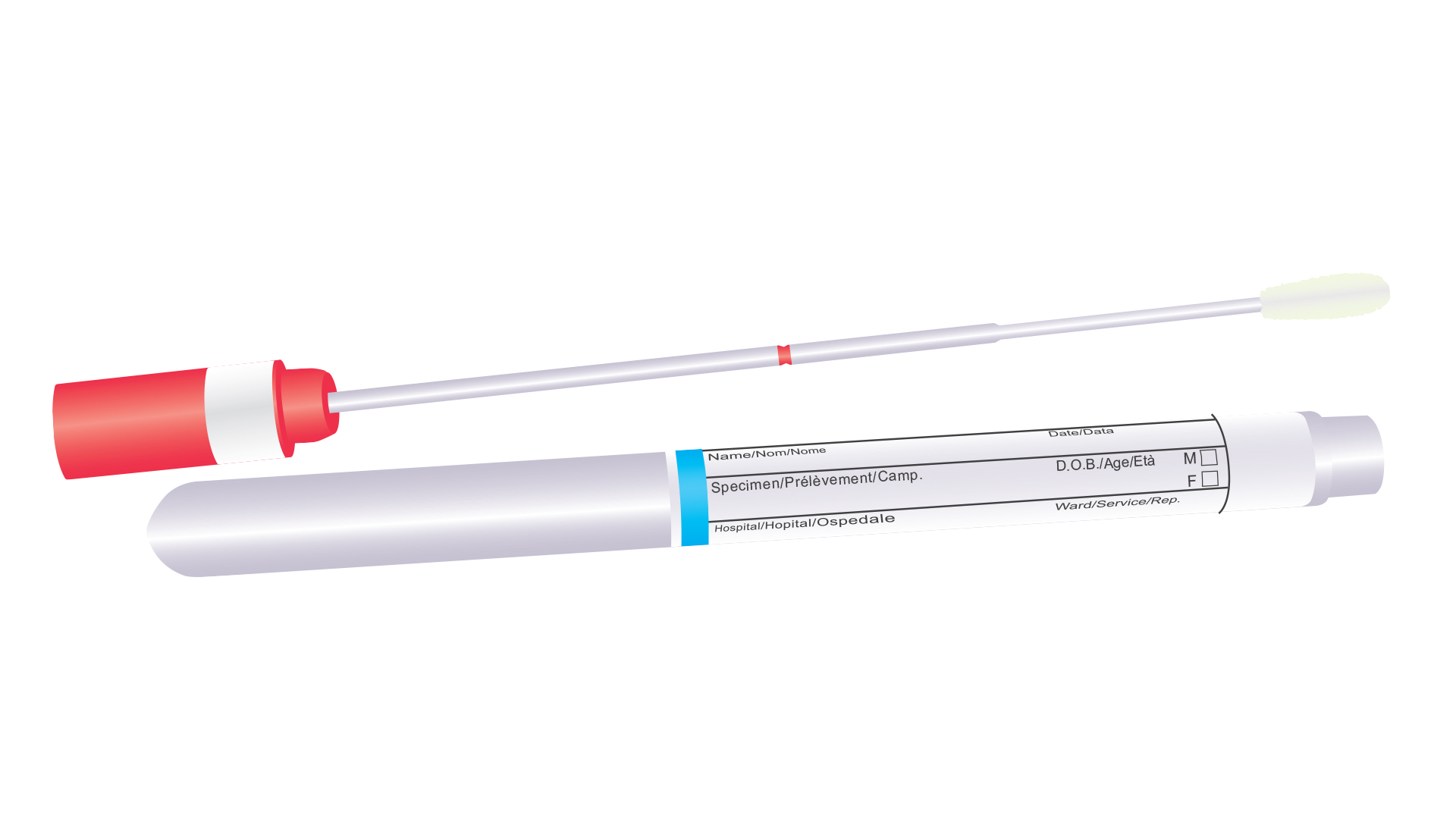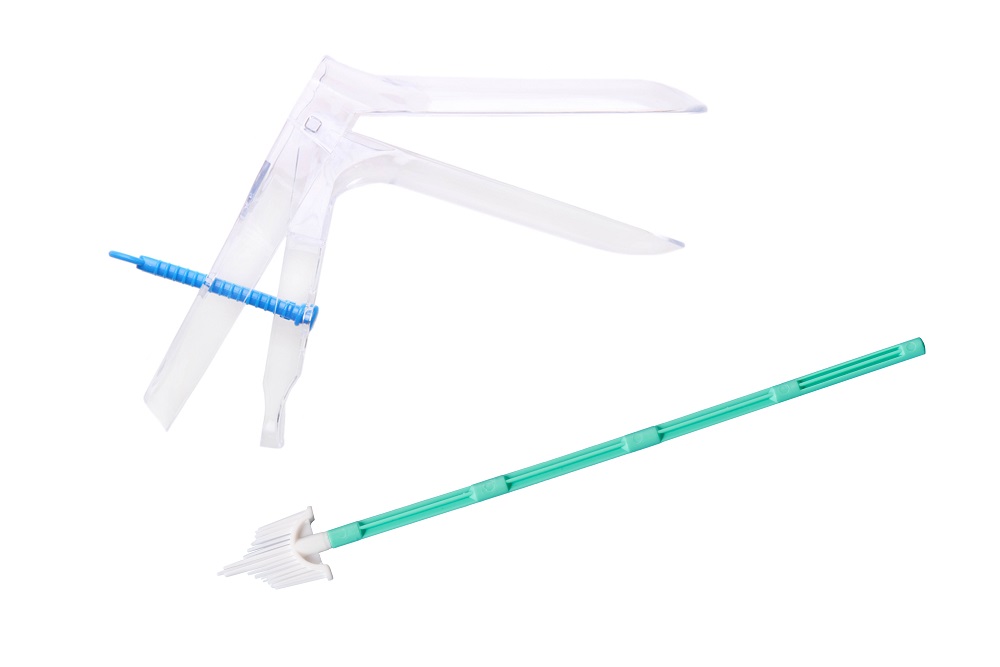Everything you need to know about your testing options, including the new self-collection test
A Cervical Screening Test is the best way that you can protect yourself against cervical cancer. The test looks for the presence of a virus called HPV (human papillomavirus), which causes almost all cases of cervical cancer. Find out more about HPV here.
There are now two options for how you can have your next Cervical Screening Test. You can choose to have a healthcare provider do the test for you using a speculum and a small brush or you can choose to self-collect your test, using a small swab.
Both testing options are accessed through a healthcare provider and are equally as accurate at detecting HPV, which causes almost all cases of cervical cancer.
Find a provider near you
You have a choice for how you have your next Cervical Screening Test
| |
Self-collected sample |
Clinician-collected sample |
| Tool used |

Self-collection swab
|

Speculum and brush
|
| Who collects the test sample? |
You do it yourself or a doctor or Nurse Cervical Screening Provider can take the test for you if you want.
|
A doctor or Nurse Cervical Screening Provider. |
| Where is the sample taken from? |
|
|
| What does it look for? |
|
|
| Where is the test usually done? |
In a private space within a healthcare setting (e.g. behind a curtain or screen or in the bathroom).
In some cases your doctor may be able to support you doing the test at home.
|
On an examination bed in a doctor’s office. |
| Is it accurate in detecting HPV? |
Yes |
Yes |
| How often do I need to do this?* |
Every 5 years |
Every 5 years |
| What happens if HPV is detected in the sample? |
You may need to have a clinician-collected Cervical Screening Test to look at cells in the cervix.
You may be required to have follow-up monitoring or be referred for further testing (e.g. a colposcopy).
|
The same sample can be used to look at the cells in your cervix.
You may be required to have follow-up monitoring or be referred for further testing (e.g. a colposcopy).
|
| What is the likelihood that HPV will be detected in my Cervical Screening Test sample (either self-collected or clinician collected)? |
On average, about one in 10 people will have HPV detected in their Cervical Screening Test sample.
Younger people (25 to 30 years old) are more likely to have HPV detected. The older you are the less likely you are to have HPV detected.
|
| * A Cervical Screening Test usually only needs to be done every five years. However, some people may require more frequent tests depending on your individual circumstances as recommended by your doctor. |
How is a clinician-collected test done?
A clinician-collected test involves your doctor or specially trained nurse taking a sample from your cervix in a health clinic.
You will be asked to undress from the waist down and lie on an examination bed with a cover over your lap.
Your doctor or nurse will insert a speculum into your vagina to view your cervix. They will then collect a sample of cells from your cervix with a small brush.
How is a self-collection test done?
Self-collection lets you collect your own Cervical Screening Test sample from your vagina using a small swab. It’s quick, easy, private and just as accurate as detecting HPV as a test done by a healthcare provider using a speculum and a small brush.
The test is usually done in a private space in a health clinic.
Your doctor or specially trained nurse will give you a small swab, explain how to do the test and direct you to a private space in the clinic (usually behind a curtain or in the bathroom).
In your own time, you can remove the swab from the tube, insert it in your vagina a few centimetres and rotate the swab 2-3 times for 10 seconds before putting the swab back in the tube and giving it to your doctor or nurse. The swab does not need to touch the cervix.
Your doctor or nurse can do the test for you using the swab, if you prefer.
In some cases, your healthcare provider can support you to do the test from home or under a telehealth appointment. Speak to your healthcare provider if you would like to access this option.
How to do the self-collection test in 4 simple steps
Step 1
- Wash your hands
- Twist the cap off the tube and pull out the swab
- Look at the swab and note the mark closest to the tip
Step 2
- Get in a comfortable position
- Insert the swab into your vagina, aiming to insert to the mark
Tip: It may be easier to use your other hand to hold the outer skin at the entrance of your vagina
Step 3
- Rotate the swab gently 2-3 times, for about 10 seconds
- It should not hurt
Step 4
- Remove the swab and place back in the tube
- Return the tube to your doctor or nurse
What happens after the test?
After your Cervical Screening Test, your healthcare provider will send your sample to a laboratory for testing.
If HPV was detected in your Cervical Screening Test, cervical cells will need to be examined to see if there are any cell changes that may, if left untreated, develop into cervical cancer.
If you had a clinician-collected Cervical Screening Test that detected HPV, the same sample can be used to look for abnormal cell changes in the cervix.
If you had a self-collected Cervical Screening Test that detected HPV, you may need to return to your healthcare provider so they can collect a sample of cells from your cervix. In this case, a healthcare provider will do the test using a speculum and small brush.
Depending on the result (for either testing option), you may need to have another Cervical Screening Test in 12 months to see if the HPV infection has cleared or you might be referred to a specialist for a colposcopy. A colposcopy is a procedure that takes a closer look at the cells of the cervix.
Learn more about your results
Common questions about self-collection
Can everyone do a self-collection test?
Most people eligible for cervical screening can choose to do a self-collection test.
Self-collection is not recommended for those who:
- have symptoms of cervical cancer or may be experiencing unusual bleeding, pain or discharge
- are undergoing Test of Cure surveillance or have been treated for a glandular abnormality
- have had a total hysterectomy with past history of high-grade squamous intraepithelial lesion
- were exposed to diethylstilbestrol (DES) in utero.
Speak to your healthcare provider if any of these apply to you.
If you notice any changes to your body such as unusual vaginal bleeding, discharge or pain you should see your healthcare provider immediately, do not wait for your next screening test.
Is self-collection as accurate as a clinician-collected test?
The self-collection test is just as accurate at detecting HPV as a sample taken from the cervix by a healthcare provider using a speculum and a small brush.
How do I know if I’m doing it correctly?
Your healthcare provider will give you instructions on how to collect the sample and offer you a private place to collect your sample, usually behind a screen or in a bathroom.
If you have any concerns about how to do the test speak to your doctor or nurse. They will be able to support you to do the test and can do it for you using the swab, if you prefer.
Can I do the self-collection test at home?
Usually, the self-collection test is done in a private space within a healthcare clinic, such as behind a curtain or in the bathroom. In some cases, your healthcare provider may be able to support you to do the test at home or under a telehealth appointment. Speak to your healthcare provider to find out more about this option.
Can I buy a self-collection Cervical Screening Test at a pharmacy?
No. The self-collected Cervical Screening Test must be accessed through a doctor or Nurse Cervical Screening Provider in a healthcare clinic.
Is the self-collection test mailed out to me like the bowel screening test?
No. The self-collected Cervical Screening Test must be accessed through a doctor or trained nurse in a healthcare setting. In some cases, your healthcare provider may be able to send the test to your home after a telehealth appointment. Speak to your healthcare provider to find out if they can support this.
Does the swab need to touch the cervix?
A self-collected swab only needs to be inserted about 3cm into your vagina. The swab should be rotated to touch the walls of the vagina, but it doesn’t need to touch the cervix.
How can I arrange to do a self-collection test?
A self-collected test is accessed through a healthcare provider. You can book a test at doctor's clinics and most Community Health Centres, Women's Health Centres or at some Aboriginal Health Services.
We recommend calling the clinic before your appointment to confirm that they have self-collection tests available.
Is a self-collection test free?
All Cervical Screening Tests are free; however, your clinic may charge a standard consultation fee. We recommend calling the clinic beforehand to see if there are any consultation fees.